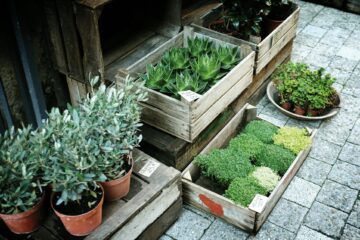Weeding is a necessary evil, but it doesn’t have to be an arduous one. There are many ways to tackle weeds naturally, whether you’re battling unwanted growth in your garden or just trying to keep them from overtaking your garden. Here are useful tips for fighting weeds without resorting to toxic chemicals or dangerous tools like gas-powered weed burners:
Weed in early spring.
Let’s say you’re a fan of starting the gardening season early. I know I am! You want to get your hands dirty, but it’s still too cold outside for anything but hardy plants. That means you have some time on your hands–and that’s when weeds grow like crazy.
You can use this time wisely by using a hoe or shovel to remove weeds before they have a chance to grow into full-fledged plants and take over your garden bed (or even worse: invade other areas). If you want to make sure that no more weeds grow back in those areas again, add some mulch after removing them so they don’t return as easily next year!
Use mulch to reduce weeds.
Mulch is a layer of organic material that’s spread over the soil to prevent weeds from growing. It can be made from many different materials, including grass clippings, sawdust, leaves, bark chips and even newspaper.
Some people mulch their gardens once or twice a year as part of their regular landscaping routine. Others use it as a temporary solution when they’re not able to get out in their yards as often as they’d like–for example if they go on vacation for two weeks at a time (or longer).
Lightly hoe weeds while they’re small.
A hand hoe is the best tool for removing weeds from a small area. It’s also effective at keeping weeds from growing in large areas, but if you’re dealing with an enormous patch of crabgrass or dandelions, it will take some time to get your hands on one and learn how to use it properly.
Hoes come in different shapes and sizes–some have long handles; others are shorter and more compact. Most importantly though: they all need sharp blades! Sharp blades make short work out of any task involving weeds (or just about anything else). So if you want your hand hoeing sessions to be fast and efficient instead of slow and frustrating, make sure that yours has a sharp blade before using it on anything other than dirt clods that have been sitting around since last summer’s garden project went bust…which brings us back around again: keep those blades sharp!
Use paper or cardboard as mulch.
The next time you’re out of mulch, don’t fret. Instead of buying new materials, try using cardboard or paper instead. Cardboard can be used as a weed barrier in the garden and will help control weeds by preventing them from getting their roots into the soil. Cardboard also helps retain moisture in the soil so that it stays moist longer after watering than bare ground would be able to hold onto water on its own. This makes it an excellent choice for areas where you want to keep your plants healthy and hydrated throughout dry spells (like during summer).
Paper works similarly but has some additional benefits: unlike most types of organic matter like leaves or grass clippings which break down over time into smaller pieces that may end up blocking access to plant roots; paper remains intact until it decomposes completely–meaning there won’t be any small bits getting stuck underfoot!
Weed among tree trunks first.
- Weed among tree trunks first. If you weed between the sidewalk and the tree, you might disturb its roots, causing them to die or not grow as well.
- Weed between the sidewalk and the tree trunk, but don’t go under it–you don’t want to disturb its roots!
Use vinegar to kill weeds naturally in yards and gardens.
Vinegar is a natural weed killer that can be used to kill weeds naturally in gardens. Vinegar works on most weeds, including dandelions. It’s also safe to use around pets and children because vinegar doesn’t contain any harmful chemicals or toxins.
Vinegar works best when combined with another method of removing weeds, such as digging up the roots or smothering them with mulch (or other materials).
There are many ways to tackle weeds without resorting to chemicals or dangerous tools, such as gas-powered weed burners or strimmers that can accidentally sever fingers when used improperly.
There are many ways to tackle weeds without resorting to chemicals or dangerous tools, such as gas-powered weed burners or strimmers that can accidentally sever fingers when used improperly.
A rake is one of the best tools for removing weeds from your lawn and garden beds. Rakes have long handles so you don’t have to bend down as far when using them, which makes raking easier on your back than using a shovel or hand trowel. If there are only a few problem areas in your yard where weeds have taken over, it’s best not to use an expensive tool like this on an entire lawn area because it will be more work than necessary for the amount of space being covered by the tool’s reach – plus you’ll need extra time afterwards cleaning up all those little pieces of debris left behind after using such a large piece!
You may also want consider using either hand tools (such as hoes) or power tools (such as strimmers) depending upon how much maintenance needs doing at once.”
We hope you’ve found this article helpful, and we encourage you to share your own tips for dealing with weeds in the comments section below. Remember that there are many different ways to tackle the problem, and no single solution will work for everyone. Just remember that it’s important not only to get rid of unwanted plants but also protect yourself from harmful chemicals found in many traditional weed killers!
div id=”advert” style=”background-color: #EFF9F0; border: 1px solid #58BC61; padding: 25px; padding-botton: 25px;”>Keep on top of your gardening with our free online journal
Our free online tool allows you to organise your ideas and garden plans and help you be as efficient as possible in the garden.
Sign up now

